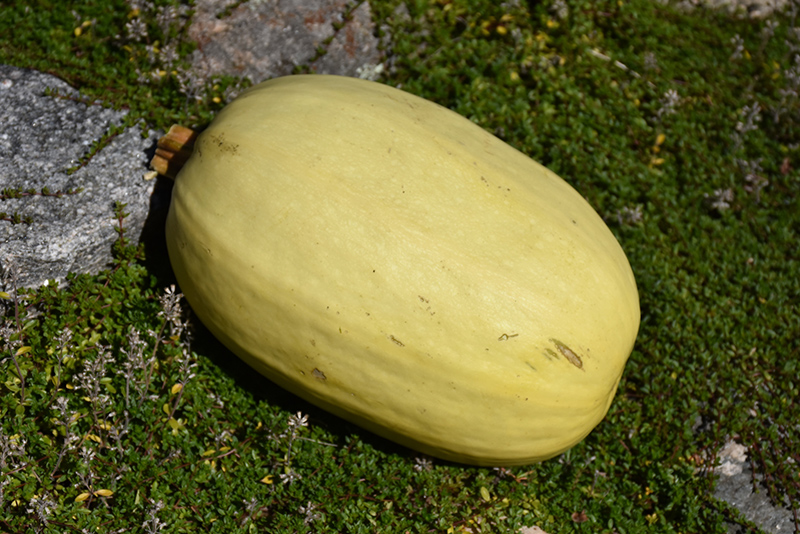Vegetable Spaghetti Squash Cucurbita pepo var. fastigiata Height: 24 inches Spacing: 3 feet
Sunlight:
Hardiness Zone: (annual) Group/Class: Winter Squash Description: Low maintenance and easy to grow, this selection is perfect for full sun gardens; 7lb oblong fruit emerge ivory and mature to yellow; a wonderful alternative to traditional spaghetti; delicious when baked, boiled or steamed Edible Qualities Vegetable Spaghetti Squash is an annual vegetable plant that is typically grown for its edible qualities. It produces creamy white oblong fruit with gold flesh which are typically harvested when mature. The fruit will often fade to yellow over time. The fruits have a pleasant taste and a soft texture. The fruit are most often used in the following ways: Planting & Growing Vegetable Spaghetti Squash will grow to be about 24 inches tall at maturity, with a spread of 7 feet. When planted in rows, individual plants should be spaced approximately 3 feet apart. This vegetable plant is an annual, which means that it will grow for one season in your garden and then die after producing a crop. This plant is typically grown in a designated vegetable garden. It should only be grown in full sunlight. It does best in average to evenly moist conditions, but will not tolerate standing water. It is not particular as to soil type or pH. It is somewhat tolerant of urban pollution. Consider applying a thick mulch around the root zone over the growing season to conserve soil moisture. This species is not originally from North America, and it is considered by many to be an heirloom plant.![]()
![]()
![]()
![]()
![]()
![]()
![]()
Characteristics
Applications
Ornamental Features
This guide is an online resource representing many of the varieties that we carry over the course of the season, and is intended for informational purposes only. Inventory varies seasonally, so we cannot guarantee that every plant will be in stock at all times - please contact the store directly for current availability. It does not include our entire selection of plants, so be sure to visit our store to see varieties that may not be represented on this list.


